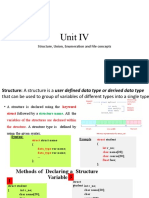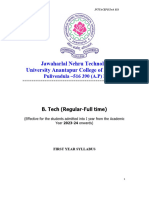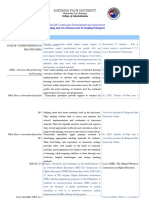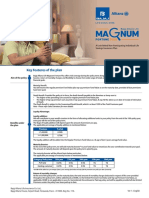0% found this document useful (0 votes)
91 views12 pagesCPWeek 10
The document discusses C programming concepts covered in Week 10 including:
1) Creating and displaying a singly linked list using a self-referential node structure with 3 functions - createNode(), displayList(), and main().
2) Demonstrating the differences between structures and unions with a program that defines each and displays their member values and sizes.
3) Writing a program to perform bitwise shifts and rotation on a 4-bit bitfield structure.
4) Writing a function to copy the values of one structure variable to another of the same type.
Uploaded by
MUKESH KUMARCopyright
© © All Rights Reserved
We take content rights seriously. If you suspect this is your content, claim it here.
Available Formats
Download as DOCX, PDF, TXT or read online on Scribd
0% found this document useful (0 votes)
91 views12 pagesCPWeek 10
The document discusses C programming concepts covered in Week 10 including:
1) Creating and displaying a singly linked list using a self-referential node structure with 3 functions - createNode(), displayList(), and main().
2) Demonstrating the differences between structures and unions with a program that defines each and displays their member values and sizes.
3) Writing a program to perform bitwise shifts and rotation on a 4-bit bitfield structure.
4) Writing a function to copy the values of one structure variable to another of the same type.
Uploaded by
MUKESH KUMARCopyright
© © All Rights Reserved
We take content rights seriously. If you suspect this is your content, claim it here.
Available Formats
Download as DOCX, PDF, TXT or read online on Scribd
/ 12






























































































